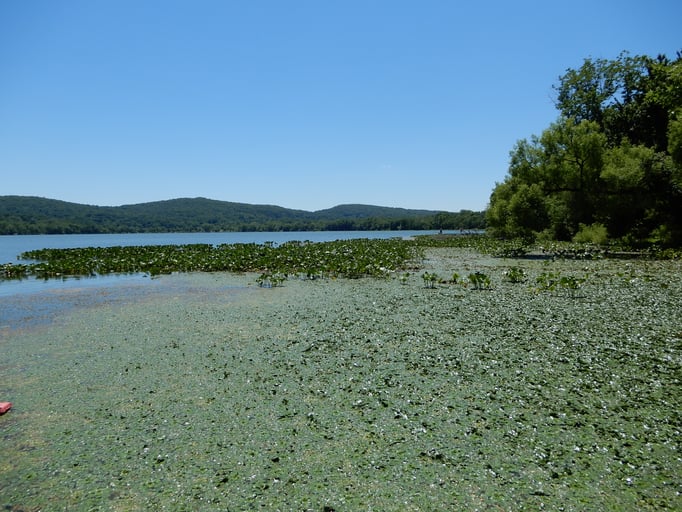Posted on Mar 13, 2025
Why Current Lake Management Practices Are Failing Us

Conventional lake management practices have long been dominated by methods that focus on short-term fixes. While these approaches may offer temporary relief, they often fail to address the root causes of lake degradation, leaving lakes and communities trapped in cycles of recurring problems.
By examining the limitations of these traditional strategies, we can understand why a shift toward targeting root causes is essential for preserving both our lakes and the lifestyles they support.
The Problems with Conventional Practices
1. Symptom-Focused Approaches
Traditional lake management methods, such as applying biocides to kill algae or weeds, address visible symptoms but ignore underlying issues. For example:
- Biocides kill algae and weeds temporarily but leave decaying biomass to sink into the sediment, fueling further nutrient recycling and exacerbating eutrophication.
- Mechanical dredging removes sediment but disrupts ecosystems and fails to prevent ongoing nutrient inputs.
2. Lack of Long-Term Planning
Many lake management programs focus on year-to-year treatments without developing a comprehensive plan for long-term sustainability. This results in:
- Increased costs over time due to repeated applications of ineffective treatments.
- Persistent degradation of water quality and aquatic ecosystems.
3. Limited Metrics and Accountability
Traditional methods often monitor irrelevant or superficial metrics, such as algae presence alone, rather than focusing on indicators like dissolved oxygen levels, sediment nutrient stockpiles, and phytoplankton composition. This lack of meaningful measurement prevents stakeholders from understanding true progress.
The Cost of Inaction
The consequences of relying on outdated methods extend far beyond ecological damage:
- Economic Impacts: Property values decline, tourism suffers, and lakeside businesses lose revenue as lakes degrade.
- Community Disconnection: The Lake Lifestyle—a source of recreation, tranquility, and connection to nature—is gradually lost.
- Threat to Pets: Harmful algal blooms (HABs) pose a significant risk to pets, particularly dogs. Year after year, reports of fatal dog poisonings linked to cyanobacteria-contaminated lakes continue to rise. Dogs often ingest contaminated water while playing, swimming, or drinking, exposing them to dangerous toxins that can result in severe illness or death. This growing concern underscores the urgency of addressing HABs proactively.
The Need for a New Approach
The 2022 Government Accountability Office (GAO) report highlights these shortcomings, criticizing conventional lake management strategies for their reactive nature. The report emphasizes the importance of shifting toward proactive, science-based approaches that address root causes like hypoxia, nutrient recycling, and ecosystem imbalance.
Clean-Flo’s Solution
Clean-Flo offers a fresh perspective by tackling the root causes of lake degradation with:
- Proven Technologies: Advanced oxygenation systems and bio-dredging techniques restore balance to ecosystems.
- Meaningful Metrics: Our Lake Management ACTION Plans focus on tracking indicators that matter, ensuring accountability and measurable progress.
- Long-Term Results: By restoring a lake’s natural ability to maintain balance, we reduce the need for ongoing interventions and create sustainable ecosystems.
Download the Lake Management ACTION Plan E-Book
Learn more about how Clean-Flo’s innovative solutions can transform your lake and protect the Lake Lifestyle for generations. Download our Lake Management ACTION Plan E-Book today to explore Innovative technology, strategies, success stories, and actionable insights that will help your lake thrive.

